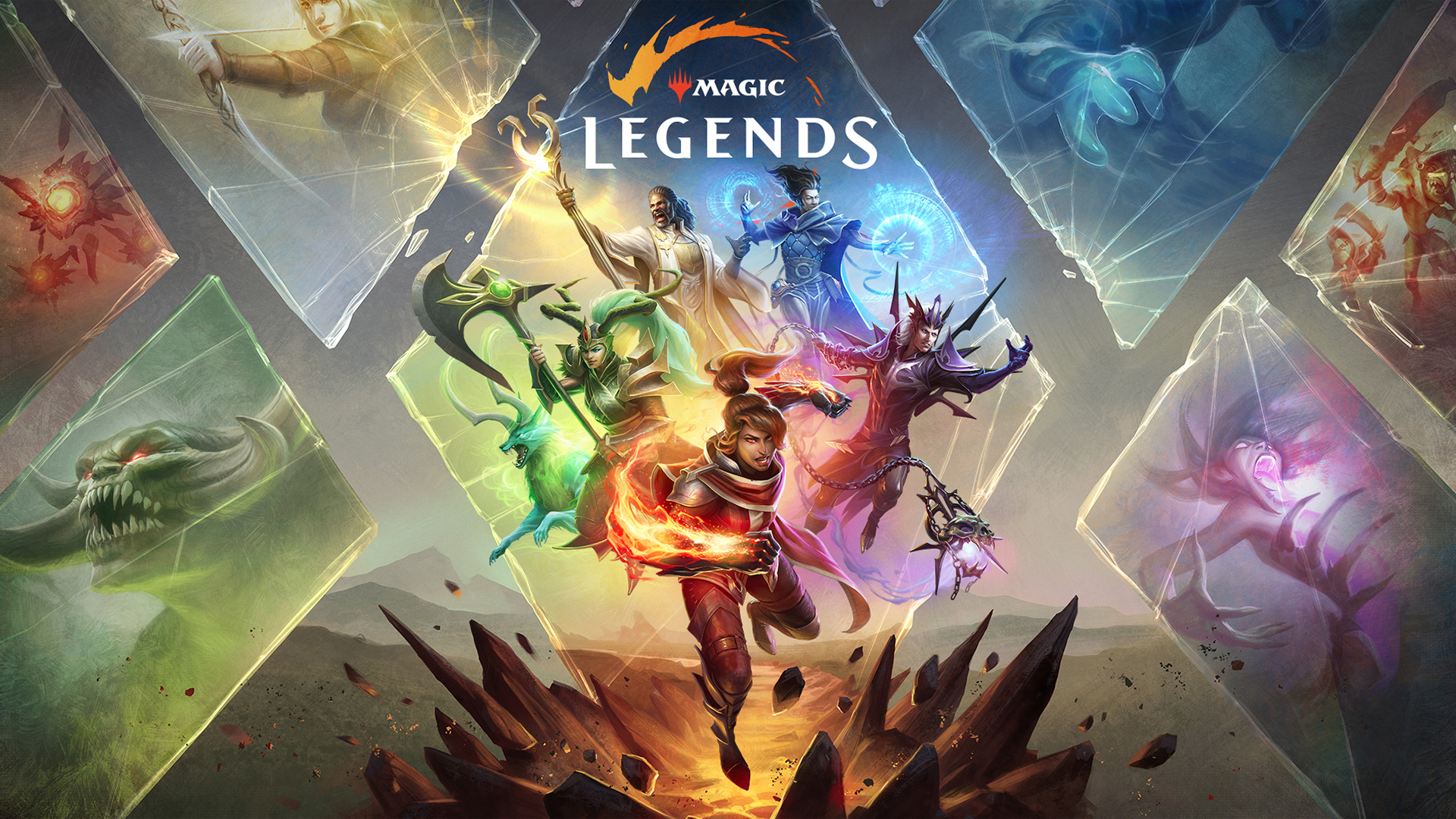The Magic: The Gathering multiverse is large, exciting, and full of possibilities. Planeswalking to new planes, meeting new characters, and fighting new evils – Magic has and will continue to capture our imagination for many years to come. But what’s next? It doesn’t do such a rich world justice to only stay in the trading card game space, and there’s one thing that all of us have in common…
Gamers gonna game.
Long before I was making a name for myself attacking with Stormbreath Dragon or getting thwomped by obscure red cards on the SCG Tour, I was sinking hundreds (if not thousands) of hours into MMOs and ARPGs. So when I first heard of Magic: Legends, my expectations and excitement were through the roof.
Magic: Legends is the newest branch in the Magic: The Gathering tree. It’s an online Action Role Playing Game (ARPG) set in the Magic multiverse where you take control of a planeswalker and start your adventure.
What exactly is an ARPG though?
The most popular game of that genre would have to be Diablo and its successors (Diablo 2, D2: Lord of Destruction and Diablo 3), but others include Path of Exile, Grim Dawn, Torchlight, and Last Epoch. These games all have some common threads running through them that I look for in any ARPG:
- Hack and Slash: Lots of action. Not turn-based like classic RPGs.
- Loot Hunting: An expansive loot system that drives the end-game. Hunting for that one perfect piece, or the materials to craft or modify something into that perfect piece.
- An aside on this is that Unique and Set Items are generally thought of as sacrosanct and used just about everywhere. With unique attributes and effects, and numbers scaling based on how many pieces you wear, these flashy pieces of gear create many moments of excitement when you find them.
- Abilities Aplenty: Lots of abilities to learn and modify so that you can tailor your character how you would like to play. Most playstyles can be broken down into two main categories — Support and Damage Per Second (DPS) — which can be broken down further into two main subcategories per role.
- Support: Tank or Healer/Buffer
- DPS: Boss Killer (high single target) or Trash Clearer (heavy area damage/burst damage potential)
- Experience and Levels: Whether it’s leveling a player character, a class, or some other system, you will always find experience gaining and making your character stronger somehow in just about every ARPG.
- Along with this, multiple game difficulties to facilitate this growth in character strength. Risk/Difficulty VS Reward.
- End-Game: Regardless of how the game is structured, the goal is to get to the end-game where you enact a plan for your character and work towards that plan. Most games use a system that can be coined as “Maps” – the term comes from Path of Exile’s end-game system, and is more universal than “Rift” (D3) or “Time Rift” (Last Epoch) – or some sort of scalable and modifiable repeatable system of generating an area and fighting monsters in that area to accomplish a task or attempt to find random loot.
- (Good) ARPGs don’t really have an ending. There’s usually an end boss that you’re looking to beat, either to finish a campaign/story of sorts, or to farm for high-tier loot, but the game doesn’t just end. Getting to max level either starts another type of leveling system (Paragons in D3), or is just extremely difficult and not likely for most players (getting to level 100 during a league in Path of Exile), but there are still plenty of things to accomplish once you do.
With these characteristics in mind, how exactly does Magic: Legends stack up?
Hack and Slash
Magic: Legends is a serious hack and slash fest. Action is fast and furious and there’s very little downtime outside of running from one fight to the next while moving through an area. In fact, there’s a fast travel system that is unlocked and used in the overworld on each plane to allow you to quickly hop back to the main town area for a turn-in and then jump right back into the action. Between your four spell slots constantly refilling from your deck, your two utility abilities, and your basic attack, you’re constantly moving, attacking, and using something.
Loot Hunting
I won’t lie here. For the first few hours, I basically found nothing. It wasn’t until I made it past the opening area, Tazeem, and made it into the game where you’re choosing a plane to travel to and solve all of its problems that I started to find loot. There are lots of things that drop, but it’s not really clear just what exactly they all are. I’ll play for a bit, and every now and then go through all of my equipment and such to see if I have anything new. Magic: Legends is missing out on that feeling of having monsters explode into piles of loot or currency like some loot piñata, even if most of it is going to be vendored or turned into some other resource.
The equipment all seems pretty generic, but I’m still in the early-game. I’m hoping that Rare and Mythic equipment are a thing and have cooler effects. There are also artifacts that you can find and upgrade at different rarities, which hopefully adds another level of customization and character building as you progress further into the game.
Loot Hunting into the end-game is one of the key elements of any successful ARPG, and if things don’t change over the course of the open beta, I think that Magic: Legends could be in trouble.
Abilities Aplenty
Magic: Legends uses a unique deck system that’s intended to be reminiscent of playing a game of Magic. You don’t know what you’re going to draw, just what you put in your deck. You have a four-card “hand,” which are your abilities, and as you use them they’re replaced by random cards from your deck. Each of these ability cards has a mana cost and your mana pool regenerates while you’re in combat.
This is wildly different from what any of the other popular ARPGs do. Most have a skill system where you pick what you want to use for your limited ability slots, bind whatever key you want to it, and you know that’s what it’s always going to do (if I press 1, I know I’m going to use my heal; if I press 2, I know I’m going to use my movement ability; and so on). With Magic: Legends, that’s not the case. At any time, any ability can be on any of those four slots. There are pros and cons to this type of system, but one con tends to outshine any of the pros.
With the fast-paced action of Magic: Legends, utilizing this random card system doesn’t lead to more meaningful decisions, but rather the opposite. I find that I’m just using whatever abilities I have, whenever I have them with no plan, strategy, or consideration about managing my mana. Times where I will hold a specific card for a specific situation are few and far between (although I do find it pretty satisfying when I do hold the right card for the right situation). Some cards are combos of sorts, where one spell will have a damage modifier if some other effect is on the mobs, and that effect is usually able to be applied from another card, but pulling this off is quite a challenge.
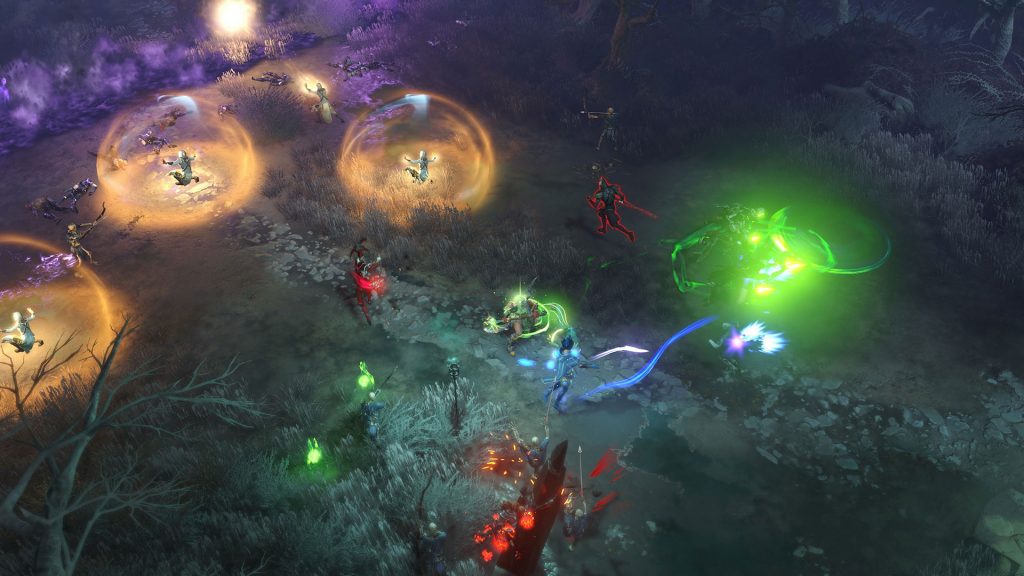
A combination of the cards you get being random and the fact that there’s no text on the UI for these abilities when they’re in your hand (on PC) makes it very tough. You can mouse over them for the card and text to blow up so you can read, but doing that while moving and fighting just isn’t realistic. You can memorize what does what based on the image, but most of the images are so similar it’s tough, and because of the triviality of the mana costs on the cards making them not necessary to recall, it’s not likely to use those as identifiers either.
Traditional roles aren’t really present when it comes to group play. While it’s obvious the Sanctifier is going to be more effective at healing than the other classes, there aren’t your traditional tank, healer, DPS tropes. Everyone just blasts away at the mobs as you run around slaughtering everything in your way.
The last bit I want to touch on in this section is something that has amazing potential, but is executed in an off-putting way. One of the card types you have is creature, which lets you summon a minion that stays on the battlefield and follows you around and fights mobs. This is awesome because it really does feel like playing Magic. Creatures are sustained damage in the card game, and that aspect translates well in Magic: Legends.
The issue I have is that even though creatures play such a big part of the game on paper, in an ARPG when everyone can and should use minions, it starts to feel a bit homogeneous and starts to cause some performance issues with so many assets on screen at once. I don’t have an elegant solution for this, but I can already tell that doing the straight analogue from MTG to Magic: Legends of “everyone has creatures and should use them” likely isn’t the correct route.
Experience and Levels
Leveling up your character in Magic: Legends is very satisfying. The current max level for a class is 30, and once you reach Level 30 of your class, you unlock a “Trait” that can be used even if you aren’t playing that class. Similar to Final Fantasy XIV, you can switch to any of the other classes you have unlocked and level them as well.
That’s a lot of information all at once, so let’s explain.
If you start out as a Sanctifier (white mana) and level to 30 and earn the Sanctifier trait, you can switch to Necromancer (black mana) and level that class and still have your Sanctifier trait that you earned active. This is a neat incentive for players to try to unlock and level all of the classes that they can. At the Open Beta start, there are the five initial classes:
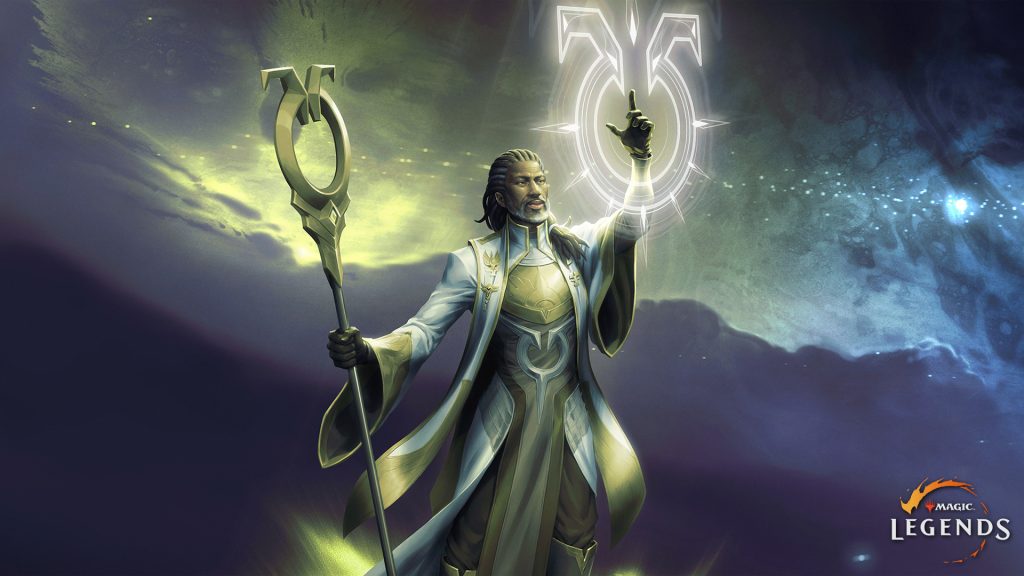
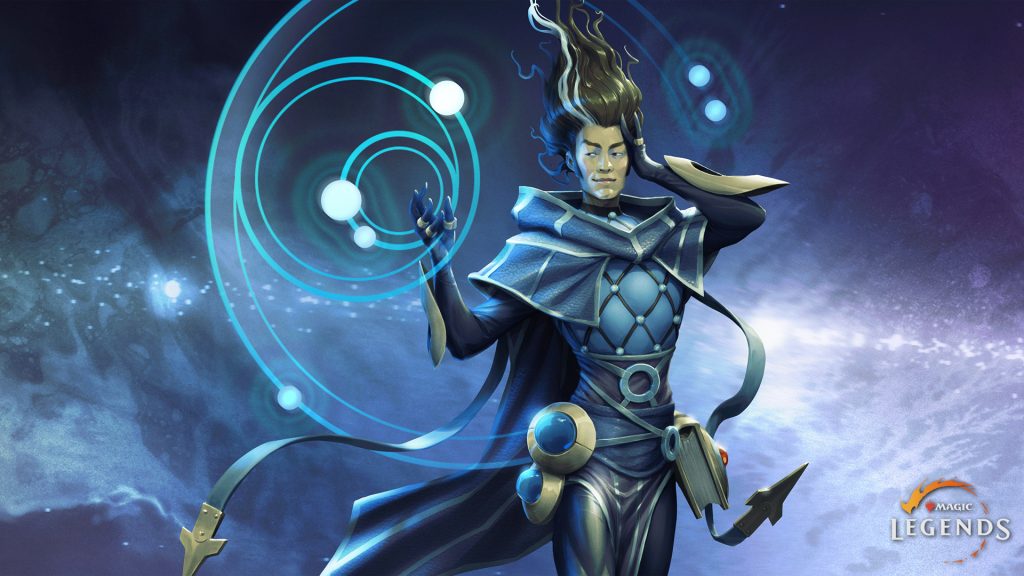
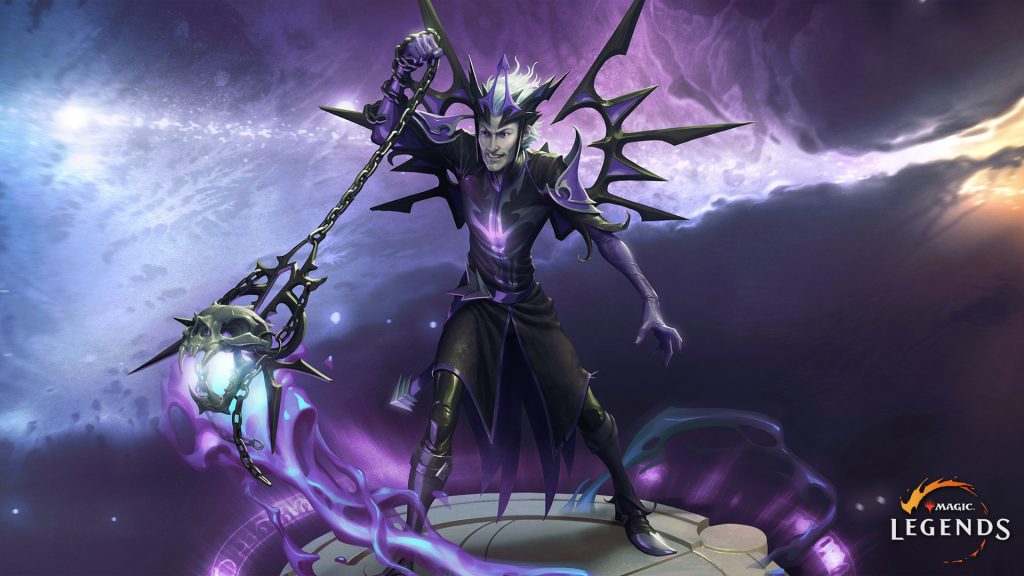
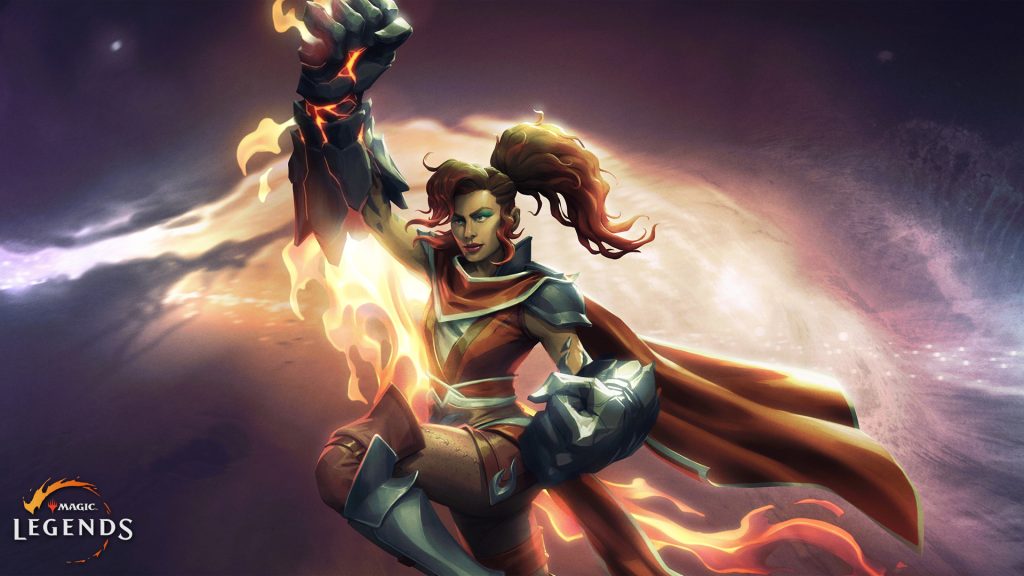
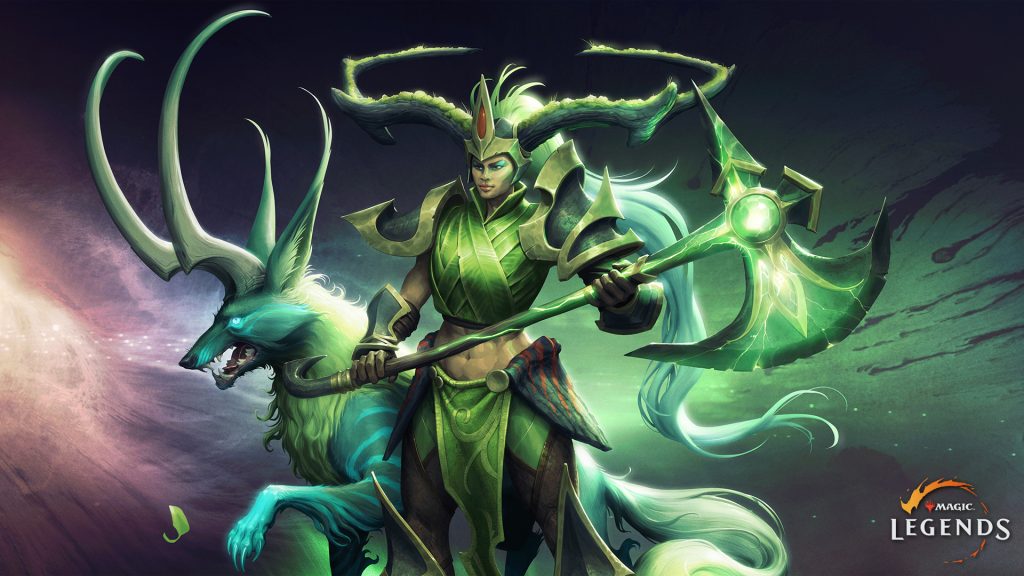
In addition to these, there’s the Dimir Assassin (UB) class that’s available from booster packs or from a vendor in game (there’s quite a bit of controversy about the monetization in Magic: Legends, but we will get to that later).
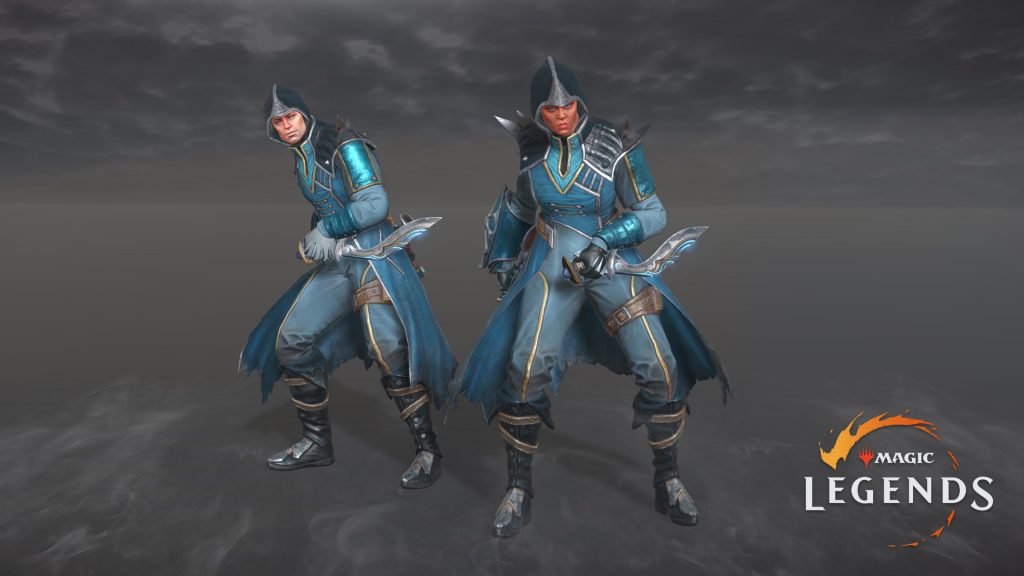
After speaking with the Magic: Legends Community Manager, I’ve gotten information that all future classes will not be exclusively found in booster packs, as they will also be rewards from large-scale in-game events or purchased directly from the ZEN store. In addition, these initial five classes aren’t meant to be the only mono-color classes. They were designed top-down to be the quintessential color identity classes, but future classes can be more bottom up and just happen to slot into one of the color identities. When this thought process is combined with all of the different color combinations and their interpretations, there’s room for a ton of additional classes to be added to the game.
Any class can use any color spells, but each has two utility abilities that will synergize with spells of their specific color, and as you level that class, you unlock bonuses to abilities and spells for your class. As an example, the Sanctifier has a utility ability called Wave of Radiance which sends out a wave of holy energy that damages mobs in its path. However, once you reach Level 10, you unlock Healing Current, which now makes Wave of Radiance heal allied creatures in addition to damaging enemy mobs. These ability augments from leveling along with special effects from equipment and artifacts were the highlights for me playing and the main driver for me to continue playing to unlock more and see what unique builds I can create.
End-Game
As of right now, not much is known about the true Magic: Legends end-game, and I think a lot of its success will hinge on it. Without a primary PvP focus, ARPGs tend to live and die on the fun, replayability, and fulfilling mechanics of its end-game. Here’s the information that I was able to gather from Micah Seff (@Dash_Reindeer) about Magic: Legends’s end-game.
Realms are currently one of the biggest areas of end-game advancement. The realm will take literally months of dedicated play to fully level up.
- There are visual improvements at every level for every station.
- There are unique spell, artifact, and world enchantment rewards for every level you unlock here (nearly 30% of spell unlocks come from Realms).
Aside from Realms:
- Collect all 175 launch spells and level your entire spell library.
- Collect all 50 artifacts and level them.
- Level all Classes.
- Level up Planeswalker Level.
- Max out Regional Reputations.
- Collect all 160 pieces of equipment and probably 5x that in new mods for that equipment…and level it up.
- World Enchantments can be applied to Story Missions and Ordeals on Expert and greater difficulties for greater rewards.
The difficulty modes are there to provide a challenge and added complexity for people who are kitted out, but they also give dramatically more rewards. To max your spells, this is the way to go and you can only take your spells above Level 6 by playing at higher difficulties.
It sounds like the end-game will revolve around replaying missions at varying difficulties and doing over-world activities in the different realms to level them up to acquire the unique rewards for such while also grinding out levels on your characters and classes and collecting basically “all of the things.”
Monetization
Magic: Legends is free to play (f2p). The game itself costs nothing, and you can go download it right now and start playing. However, the biggest controversy with Magic: Legends is its monetization. Launching open beta with a fully functional in-game store isn’t something new, but the way things are set up right now is a huge pain point that most feel is unacceptable.
Booster Packs are purchasable via the ZEN store, which have a chance to include the new Dimir Assassin class along with other types of items: equipment, spell scrolls, etc. These are essentially loot boxes. We aren’t unfamiliar with loot boxes, as booster packs are just that in analog, but in the digital world where the actual distribution is a bit more ambiguous, there’s a lot of controversy regarding the ethics of it (with some countries imposing legislation to restrict or eliminate the use of them).
Outside of these booster packs, things are even more muddled as the currency system is as complicated as I have ever seen in a game. In addition to materials you find for leveling up equipment, spells, and artifacts, there’s gold, aether, unrefined aether, and ZEN.
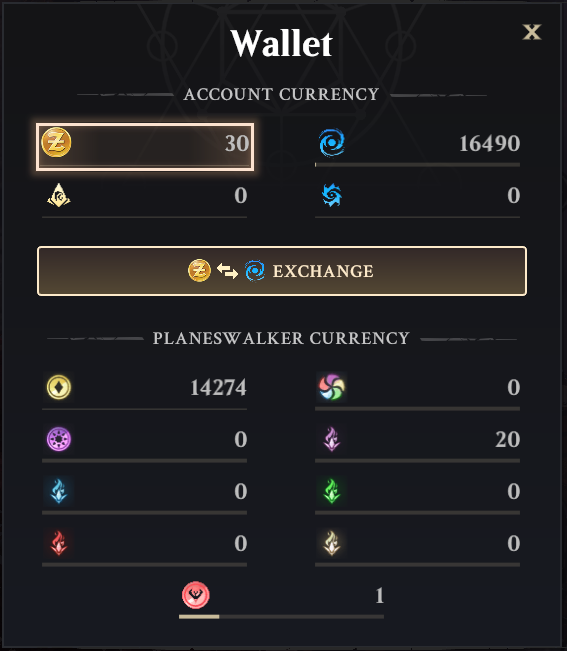
Gold is like any other ARPG. Quests reward it, mobs drop it, and vendors give you it for selling things. It’s used abundantly. ZEN is what you can buy directly for real money. But where it gets weird is aether and unrefined aether.
Aether is used when upgrading things in game, but it can also be bought and sold on the community market with other players in game. Unrefined aether is acquired from completing missions and skirmishes. It refines into aether automatically as you do things in game, but you have a daily cap of 50,000 aether that you can refine each day.
Got that? Okay, cool. But it gets even more complicated because you can exchange aether for ZEN (and vice versa) via a community-driven currency exchange!
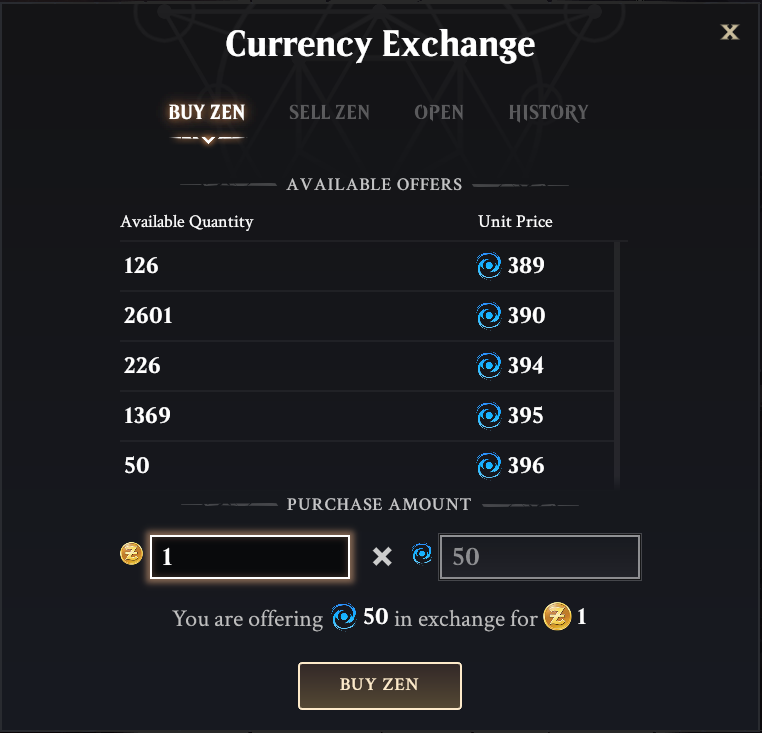
Here, players can set how much of one type of currency they want to exchange for the other and at what rate, and it’s on the market to adjust if there’s ever an influx of one type of currency. This is meant as a way for f2p players to acquire the paid currency so they can purchase things from the store (like booster packs and other unlocks). However, with the booster packs being random and only having a chance at something like the new Dimir Assassin class, let’s look at the numbers.
- The Dimir Assassin booster packs are 300 ZEN each, but the 5 pack bundle is a discount at 1,200 ZEN.
- ZEN through the Arc store is $10 for 1,000, which makes a 1,200 ZEN Bundle about $12.
- Aether to ZEN right now hovers around 400 Aether for 1 ZEN, which is 480,000 Aether for your 1,200 ZEN needed to buy a booster pack bundle.
- At the 50,000 aether refinement per day hard cap in the game, that means it would take you about ten days of fully refining as much aether as you could to get enough ZEN for one booster pack bundle (which still doesn’t guarantee you the new class).
- As with most gacha systems, it is highly discouraged to buy packs/boxes/pulls without getting the maximum discount on the offered deals. (Some are eleven pulls for the price of ten.)
Now, the Dimir Assassin class isn’t a must-have to play the game. You can just use the basic classes and battle your way through all of the realms and unlock everything. There certainly is enough content for you to play without ever trying to get any ZEN, but it feels bad when an f2p game’s only way to access paid things through in-game grinding is convoluted and seems so unrealistic. Since the aether-ZEN market exchange is driven by whatever the community is willing to buy and sell at, there’s a chance that prices can end up more accommodating, but will that ever happen? The market is community-driven, but still controlled and operated by Magic: Legends.
The last piece of this puzzle is the Broker in game as a faucet and drain for gold. This is a vendor like in any ARPG, but once things are sold to it, they’re up for purchase to everyone from that Broker. This is an outlet for duplicate things —say if you already had the Dimir Assassin class and you pulled another one in a booster pack, you can sell it to the broker and then someone else can buy it. This is a pretty cool system. However, at this time, there are four Dimir Assassins for sale on the Broker and they’re 8.5 million gold each. I have probably twenty hours in Magic: Legends right now, am sitting at Level 12, and only have 15,000 gold. That just seems completely unattainable at the current flow of gold.
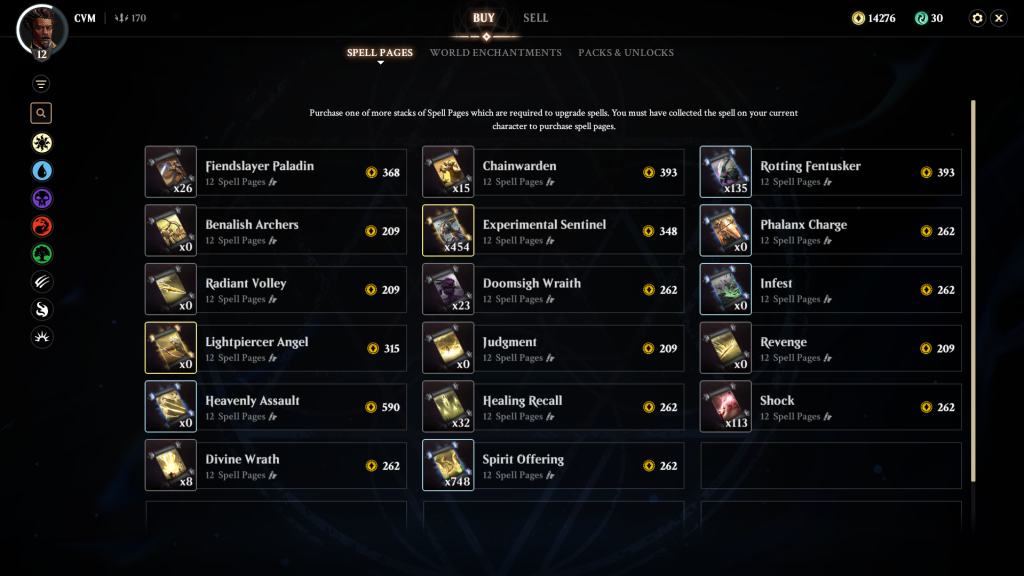
Let’s step back and look at other successful ARPGs. Diablo games are not free to play. You purchase the game, and when new content comes out like an expansion or a new class pack like the Necromancer, those also have a price tag. You buy it and you know what you get. Path to Exile is the closest we’re going to get for a comparison, as it’s 100% free to play. However, none of its content is behind microtransactions — cosmetics, quality of life improvements, and backer packs are how they are making their money and they have been absurdly successful.
Let’s face it — with Diablo 2: Resurrected being released this year, it’s going to take a great game with an even greater IP to keep your head above water. Magic: The Gathering is a great IP, but all people are talking about right now are the design pain points and their disdain for Magic: Legends’s monetization implementation.
My Opinion
Magic: Legends is an ARPG for people who love Magic, but if you’re an avid ARPG player and only kind of dabble in Magic, you’re going to be confused and disappointed. The gameplay isn’t as smooth as its competitors, there are bugs, numbers on the monetization are off, and it just doesn’t look great aesthetically. It’s technically still in Beta and hoping to go to a full launch later this year. My hopes are that they take the community feedback and mold the systems into something that’s worthy of being propped up by such a rich and resonant IP.
For now, at least until D2 comes out, I’m going to be playing a lot of Magic: Legends because I’m such a huge fan of the genre and IP, but I won’t be spending much money until I see some changes and Perfect World addressing the community concerns. It’s free, and I hate the companion mechanic, so I might as well give this a shot.

